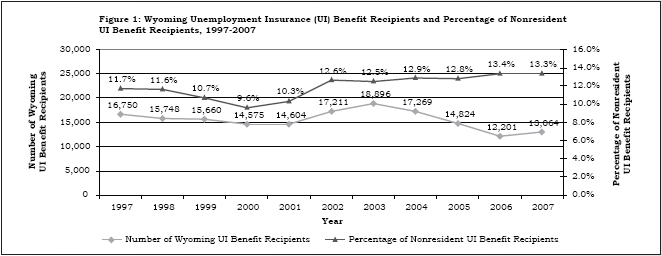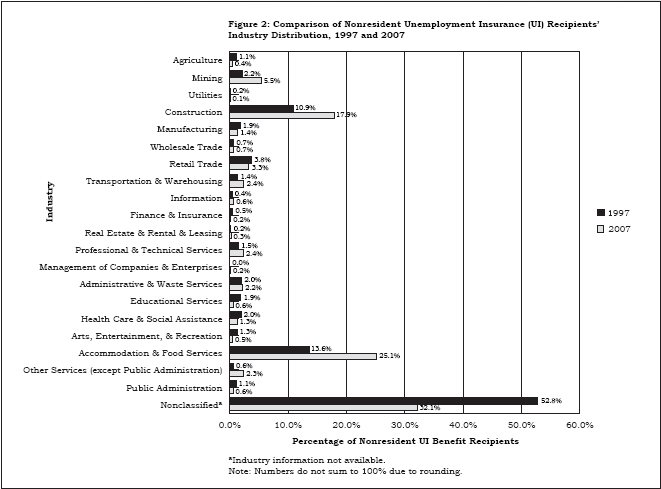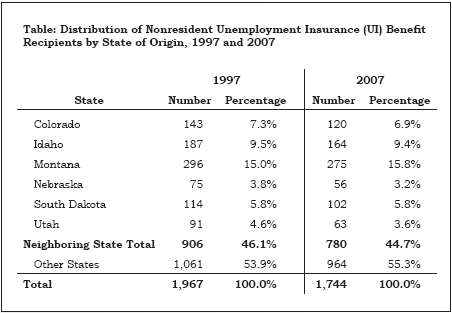From Another Angle: Using Unemployment Insurance Benefit Recipients’ Historical Data to Understand the Wyoming Labor Supply Situation
This research, based on Unemployment Insurance (UI) benefit recipients’ historical data, examines whether there has been a significant change in the number of nonresident UI claimants in Wyoming in recent years. It also shows these workers’ states of origin.
Labor shortages have hindered business expansion for many Wyoming employers in recent years. Companies and economic development agencies have put great effort into recruiting workers from other states. This research, based on UI benefit recipients’ historical data, examines whether there has been a significant change in the number of nonresident UI claimants in Wyoming in recent years. It also shows these workers’ states of origin.
There were 12,201 unemployed workers collecting UI benefits in Wyoming during 2006, the lowest level in 11 years (see Figure 1). The number increased slightly in 2007 to 13,064, which was the second lowest number since 1997. However, in these two years the proportion of nonresident UI benefit recipients reached its highest levels: 13.4% and 13.3%, respectively. The lowest proportion was 9.6% in 2000; the trend has slowly increased since then. These data are consistent with other findings. A recent research article (Jones, 2007) found that the overall working population in Wyoming from 2004 to 2006 increased by 8.3%, of which almost all the new growth was due to nonresident labor.
Figure 2 shows the industries in which the majority of nonresident workers were employed before they began collecting UI benefits in 2007, with a comparison to similar workers in 1997. One-fourth (25.1%, or 437) of the nonresident UI benefit recipients worked for accommodation & food services in 2007, almost twice the proportion of 1997 (13.6%, or 268). Other significant increases occurred in construction and mining: 17.9% (312) worked in construction in 2007, up from 10.9% (215) in 1997. Only 5.5% (96) of nonresident UI recipients worked in mining in 2007, but this was more than twice the 1997 level of 2.2% (44).
Based on the nonresident UI recipients’ home addresses, the major out-of-state labor sources for Wyoming remained similar between 1997 and 2007 (see the Table). The six neighboring states (Colorado, Idaho, Montana, Nebraska, South Dakota, and Utah) contributed the most. Nearly half of the UI recipients in both 1997 (46.1%, or 906) and 2007 (44.7%, or 780) were from those states. Most (15.8%, or 275) were from Montana, followed by Idaho (9.4%, or 164) and Colorado (6.9%, or 120). The other 43 states contributed the remaining 53.9% (1,061) in 1997 and 55.3% (964) in 2007.
ReferencesJones, S. D. (2007). Demographic effects of Wyoming’s energy-related expansion. Wyoming Labor Force Trends, 44(4). Retrieved February 20, 2008, from http://doe.state.wy.us/LMI/0407/a1.htm
Return to text

Return to text

Return to text

Last modified on
by April Szuch.
